About Ebykr
Ebykr celebrates classic and vintage lightweight bicycles through provoking imagery and opinion. Let's roll together!
About Ebykr
Ebykr celebrates classic and vintage lightweight bicycles through provoking imagery and opinion. Let's roll together!
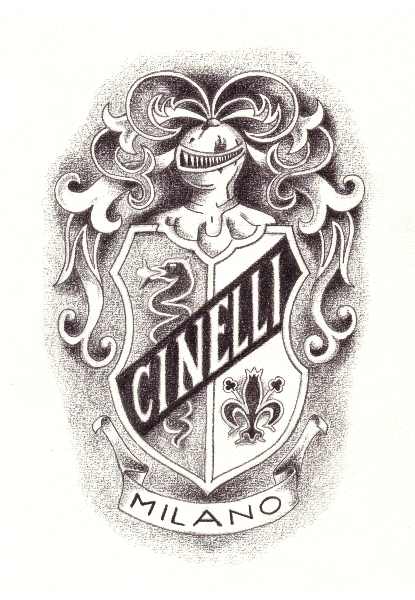
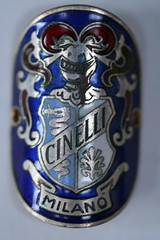
Ask any cyclist about their preference of handlebar tape — soft or cushy, black or colored, cork ribbon or fabric — and you’ll receive an array of answers and as many suggestions for your own ride. Ask them what brand they prefer and the majority will have the same answer: Cinelli. But Cinelli’s contributions go well beyond handlebar tape.
Throughout cycling history, Cinelli bicycles have been some of the most innovative and race-proven machines to hit the road, trail and track. The company’s founder and namesake, Cino Cinelli, was the primary driving force behind this innovation and his bikes have become benchmarks in cycling technology as a result.
Long before the Cinelli brand gained its now-legendary status, Cinelli the man crossed the finish line a winner in the 1943 edition of Milan-San Remo, proving to the cycling world he was a major threat in the peloton. Cinelli was always interested in gaining an edge, and so with successful racing experience in his jersey pocket, he dutifully took to the machine shop and began working on new, improved cycling designs.
Five years later, in 1948, he founded Cinelli Bicycles. High on his list of priorities was a redesign of the bicycle cockpit: a more aggressive riding position to improve pedal stroke and aerodynamics, and stiffer materials to reduce power loss. With his racing career now behind him, Cinelli took his perfectionist nature to the drawing board and established a line of components that dominated the racing scene shortly thereafter.
Convinced that smaller wheels and longer cranks were more effective than then-standard 27 inch wheels, Cinelli developed a smaller, more aerodynamic bike with appropriately longer cranks for better leverage. He incorporated smaller wheels which, Cinelli insisted, provided higher cadence leading to a smoother, more powerful ride.
Though his concepts in this regard didn’t take off immediately or with great force, Cinelli slowly began revolutionizing frame design, not to mention the component side of the cycling industry. His frames were highly sought after by Olympian track cyclists and found their place in racing history as drastic reinterpretations of classic staples.
One of Cinelli’s most significant contributions revolved around the design of his forks. He contended that a sloping crown shortened the fork legs themselves, thereby reducing flex and adding rigidity that encouraged less power loss. Though its aerodynamic advantages were negligible — aerodynamics was a fad that didn’t hit the bicycle build scene until several years later — the design stuck.
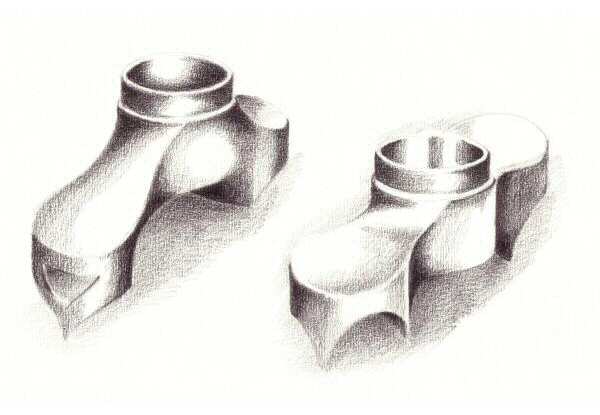
Cinelli himself acknowledged horizontal crowns were useful on rougher roads, but otherwise, a stiffer fork was far more advantageous than earlier, flexier designs. In combination with his radical new frame designs – like the Super Corsa, which employed a more aggressive riding position and Fast Back seatpost clamp centered behind the top tube, strengthening the frame’s grip on the seatpost – Cinelli’s concepts came to fruition with a fervor and success the bicycle industry could simply not ignore.
Cinelli’s bar and stem designs accounted for most of his early business. According to David Herlihy’s interview with Cinelli,
“Annual production climbed from about 5,000 stems and bars in the 1950s, to 7,500 in the early 1960s. By Cino’s retirement in 1978, the figure had reached a giddy 150,000.”
Though he primarily designed steel components, Cinelli’s alloy handlebars were among the first to be accepted by professional racers in 1963 and subsequently by the cycling community at large. The Cinelli Ram, a full-carbon integrated handlebar and stem combination, was among the first of its kind to hit the market in 2002, and its aerodynamic yet ergonomic design has appealed to many riders in the professional peloton since then.
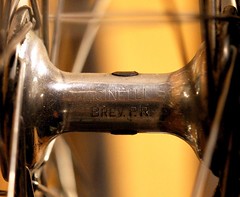
Always advancing the state of the art, Cinelli released Bivalent Quick Release hubs in 1963 – featuring a system that allowed the same wheel to be used in either the front or rear position. The Bivalent design employed use of a specially-designed freewheel that mounted to the frame independently from the wheel. It was radical, smart and pure Cinelli.
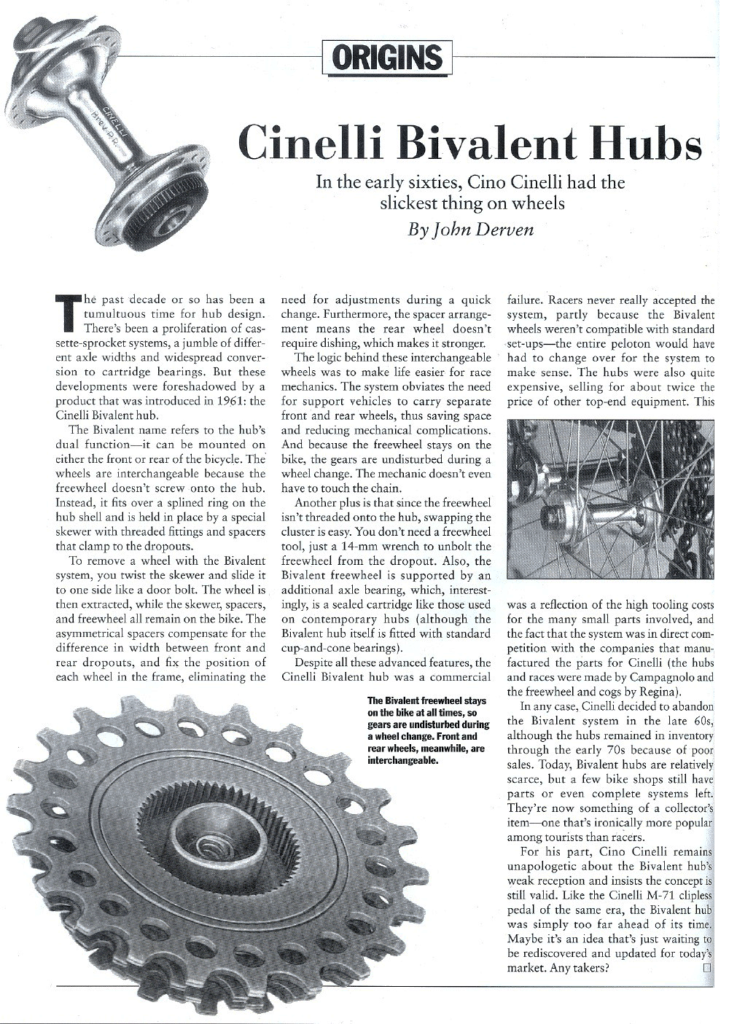
While the hubs were made by Campagnolo and the freewheel was manufactured by Regina, the concept – which allowed quicker wheel changes during time-critical races – never caught on. Several bikes that came spec’d with the hub system sold in the U.S., but sales in Europe remained tepid.
Cinelli abandoned the system in the late 1960s, but its various components remained in inventory throughout the 1970s. Nonetheless, Bivalent hubs were one of Cinelli’s most prized concepts, and the hubs have become more of a collector’s item than racer’s tool.
Cinelli continued innovating components with new introductions to the cycling world including: the first clipless pedal system, the M71; a saddle named the Unicantor, made of a plastic material called Rilsan and covered in buffalo hide to compete with full leather saddles, which tended to get squishy and deformed over time; and Binda toe straps, a revolutionary and tough advancement of pedal functionality and the only one of its kind at the time.
As his reputation for innovation grew, so too did his respect as a frame maker in the race circuit. Cycling legend Fausto Coppi first raced a Cinelli frame in 1947 and from then on always remained willing to field test Cinelli’s new designs, such as a twenty-inch wheeled road bike with longer cranks and shorter wheelbase.
Cino Cinelli’s hunger for improvements and implacably meticulous nature lured Danish cyclist Ole Ritter to the Cinelli brand for his own personal quest: the hour record. So, in 1974, Cinelli designed an aerodynamic “Funny Bike” for Ritter, who broke his own previous record and brought the pursuit of the hour record to the forefront of cycling consciousness.
The bike itself used a longer crank set and narrower hubs to enhance aerodynamics, as well as winged fork blades and tubular tires designed specifically for the event. This model paved the eventual way for a new aerodynamic model – and one of Cino Cinelli’s final projects – named the Laser.
Cinelli frame output averaged around 600 to 700 frames per year at its peak, and around 200 frames per year at the company’s onset. Most popular – not to mention enduring – among his line was the Super Corsa, a steel road frame that underwent very few changes from its inception in 1947 onward.
Due to a label printing error at one point in its history, the Super Corsa was briefly labeled Speciale Corsa. According to Cino’s son, Andrea Cinelli, there is no difference whatsoever in the frames themselves aside from the label.
Aside from the man and company being so innovative, what made Cinelli frames so special? Many say the frames stood out because they were fully custom. According to Herlihy’s interview with Cinelli:
“Frames were only consigned per custom-order, and customers often had to wait months for delivery, or even longer when he had outstanding orders from Olympic athletes.”
This was due, in part, to the fact that Cinelli refused to mass-manufacture any of his frames. It would prove to be impossible to expand production of the frames without sacrificing quality, he reasoned, and Cinelli stood adamantly against any such move.
Though Cinelli bikes are no longer fully custom today, the ride quality they offer hasn’t diminished at all. “I ride a 2003 Cinelli Unica with an aluminum frame, carbon fork, and carbon seat stays,” says Hans Carlson, a road rider from Orono, Maine. Carlson goes on to say:
“My last bike was full aluminum, and it was harsh to say the least. I’ve found the geometry and the softness of the [Cinelli Unica] ride nice; I’ve been really happy with the ride characteristics and overall quality of the product.”
It seems Cinelli’s longevity hasn’t changed much, either. Says Carlson, “I would buy another one, but I believe this Cinelli is probably the bike I will ride for a long time to come.” Judging by the number of used Cinelli frames that remain available today, he is not alone in this belief.
Distinguishable features on Cinelli frames are helpful in determining the time period in which the frame was built. A bottom bracket grease port, prevalent on early models, was taken out of the design in 1965. Around 1968, a three-hole lug design began appearing on models.
In 1978, Cino Cinelli sold shares in his company to Antonio Colombo, owner of Columbus tubing – Cinelli’s frame material of choice from almost the beginning of his frame manufacturing; he started with Reynolds tubing, but switched to Columbus shortly thereafter.
Not long afterward, the classic Cinelli logo underwent a major redesign: instead of the classic and simple “C” that Cinelli favored, the logo became a multi-colored “C” which, according to Herlihy, Cinelli himself did not like. “I guess they felt they had to change something, the way a new boss rearranges furniture,” Cinelli said.

Serial numbers began running sequentially a short while after the logo change. New numbers were 5 digits in length, with the first two digits being the year of manufacture and the last three digits being the serial number of the frame for that year. This change occurred in 1980 and ran contrary to the previous, long standing serial numbering scheme, which did not indicate date of manufacture or sequence in any discernible way.
But the Cinelli Company’s innovative spirit did not die when Cino sold the company. According to the company’s official website, Cinelli’s company goals are:
“New technologies, sophisticated materials, experienced technicians, very strict tests, state of the art tools, but also art shows and design competitions…Only new stimulations and new ideas can help us create the product which is a synthesis of (our) dreams and visions.”
Cinelli put this concept to practice in 1991, when they produced a frame and fork for the burgeoning mountain bike market. They enlisted the help of Gary Fisher himself for the design and called the new bike the OttoMilla.
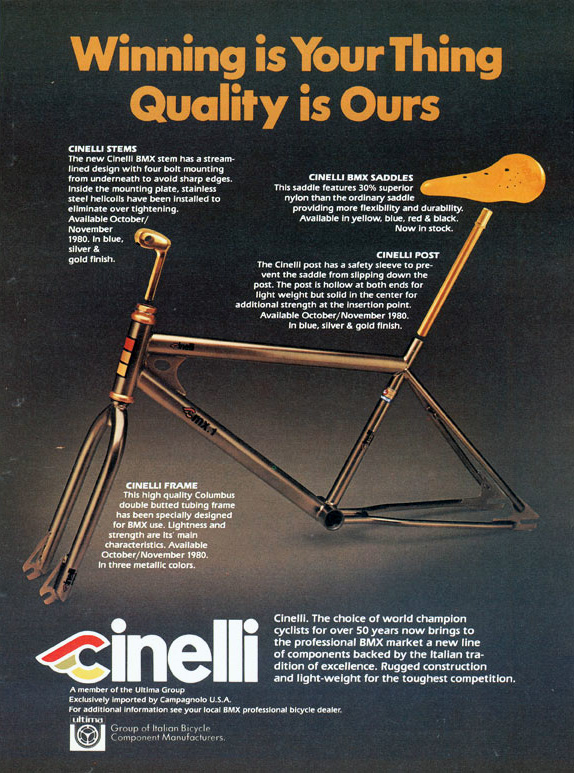
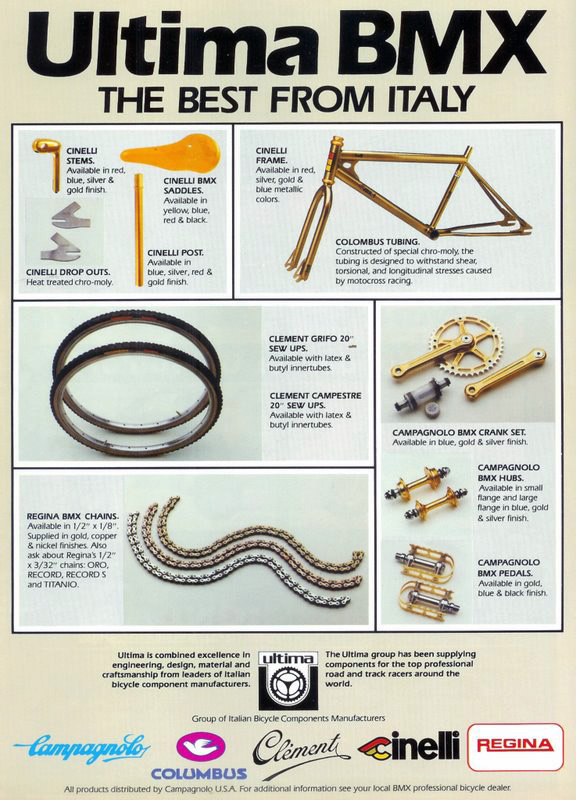
This had been preceded by Cinelli’s dabbling in BMX bicycles a full decade earlier, in the late 1970s and early 1980s. As stated in company marketing materials at the time:
“This high quality Columbus double butted tubing frame has been specially designed for BMX use. Lightness and strength are its main characteristics.”
Production methods also changed over time, especially with the advents of the aluminum and then carbon crazes; instead of lugs, aluminum frames were constructed through TIG welding, and when carbon came along, the processes changed again to layered and monocoque designs.
Still, the core Cinelli philosophy has remained consistent over time: build stellar bikes while maintaining an insatiable desire for innovative design. Today, Cinelli carries a full line of aerodynamic and technologically current bicycle models. The Laser Mia, for example, boasts a full-carbon Columbus tubeset and matching tapered Columbus fork.

The fork design has an aerodynamic shape common among other forks today, though this was revolutionary when Cinelli first developed the Laser predecessor years ago in 1981. The new model comes stock with Campagnolo Super Record 11 components, which is no surprise, since Cino Cinelli and Campy’s founder, Tullio Campagnolo, shared a close relationship together throughout their careers as component designers and manufacturers.
In fact, Cinelli often rejected business opportunities because they would put his products in direct competition with those of Campagnolo. As even casual cycling observers can tell, competing with Campagnolo is akin to competing with the best.
Other road bikes in the carbon line include the Very Best Of, Strato Faster and Experience Speciale, each designed with Cinelli’s sloping top-tube design well intact. Always eager to stay on top of current trends, Cinelli has also developed lines of functional adventure and track bikes as well, such as the Hobootleg Geo, Gazzetta della strada, the Supercorsa Pista, and even a single-speed cyclocross model named Mash CXSS.
Coupled with a commuter-style series of bikes, Cinelli has refined their line to encompass most styles of riding without sacrificing ride integrity, technology or innovation. Nor has Cinelli forgotten its roots.
The company still produces the original steel Super Corsa, complete with Columbus Niobium tubing and fork, as well as Cinelli bottom bracket and lugs.
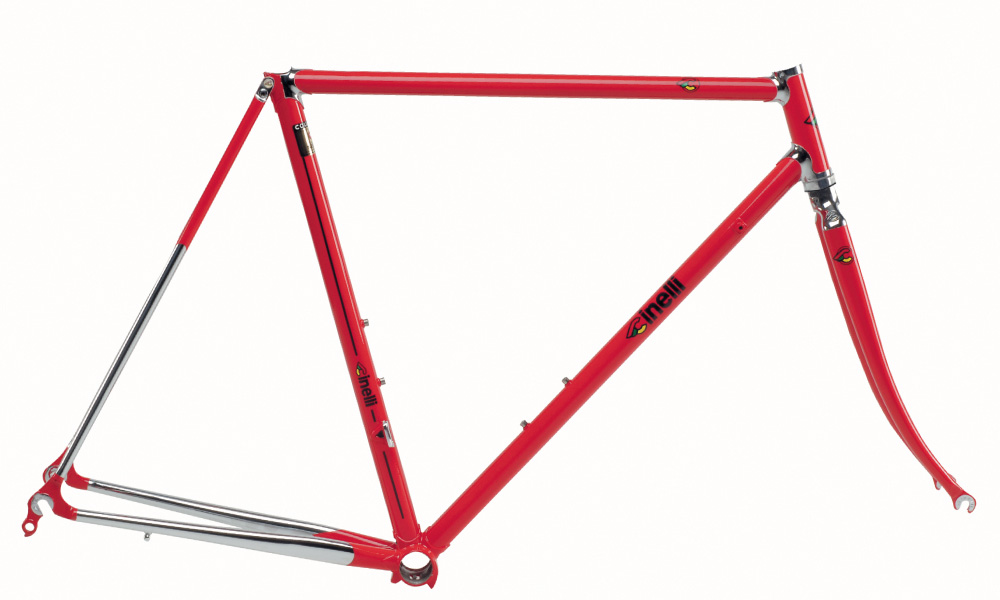
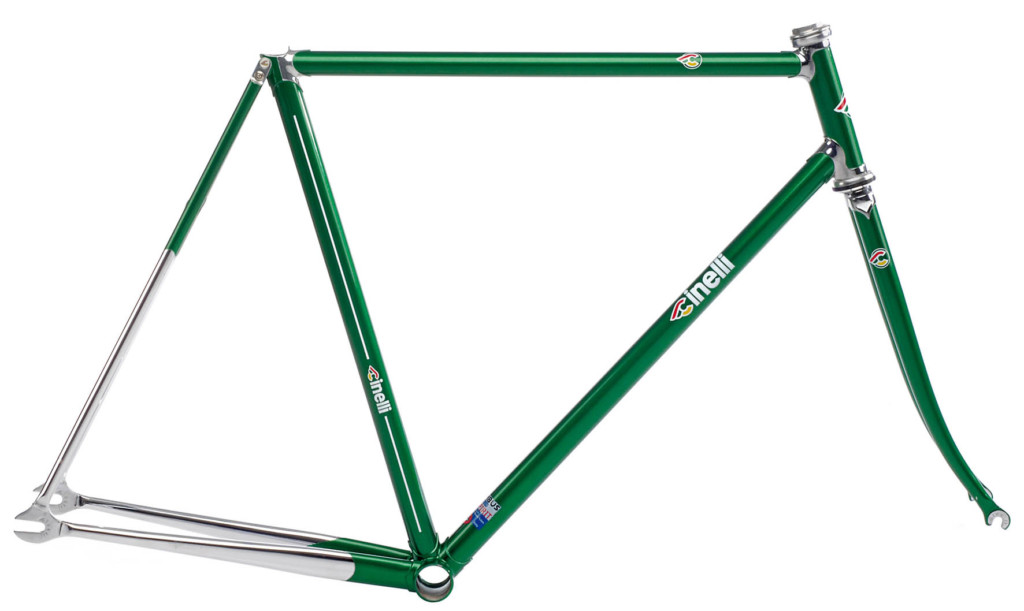
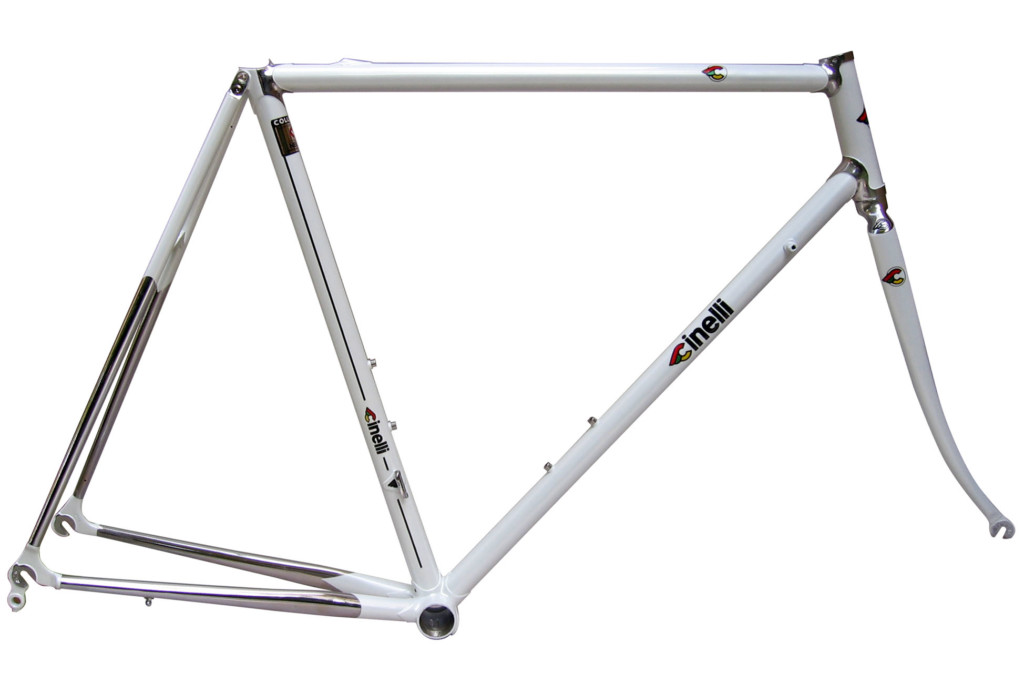
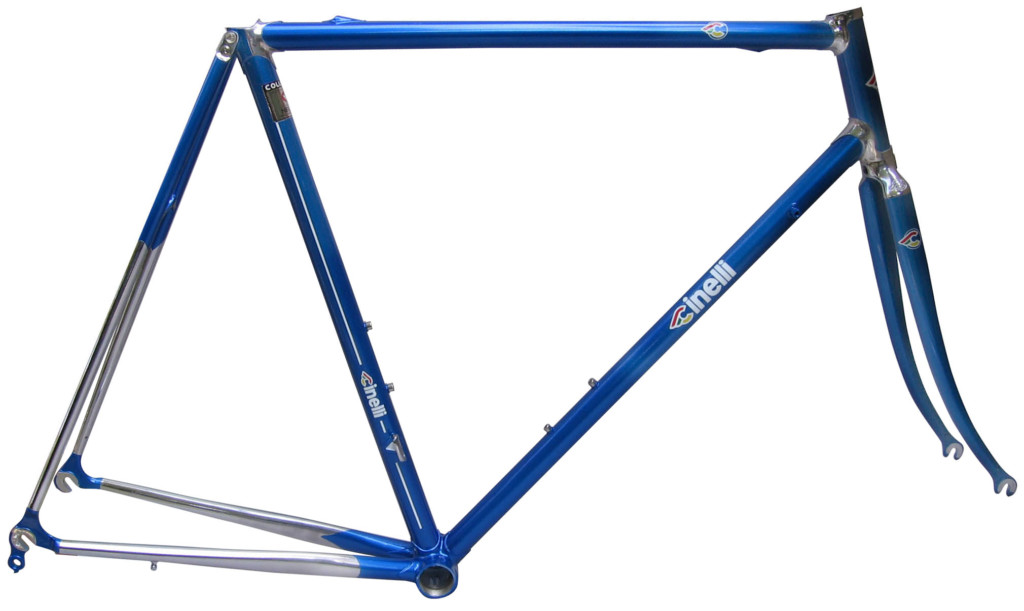
With its Fast-back design and detailed handmade artistry, the Super Corsa holds its place among legendary bikes even today, in turn helping Cinelli secure its position in the cycling world with this production model.
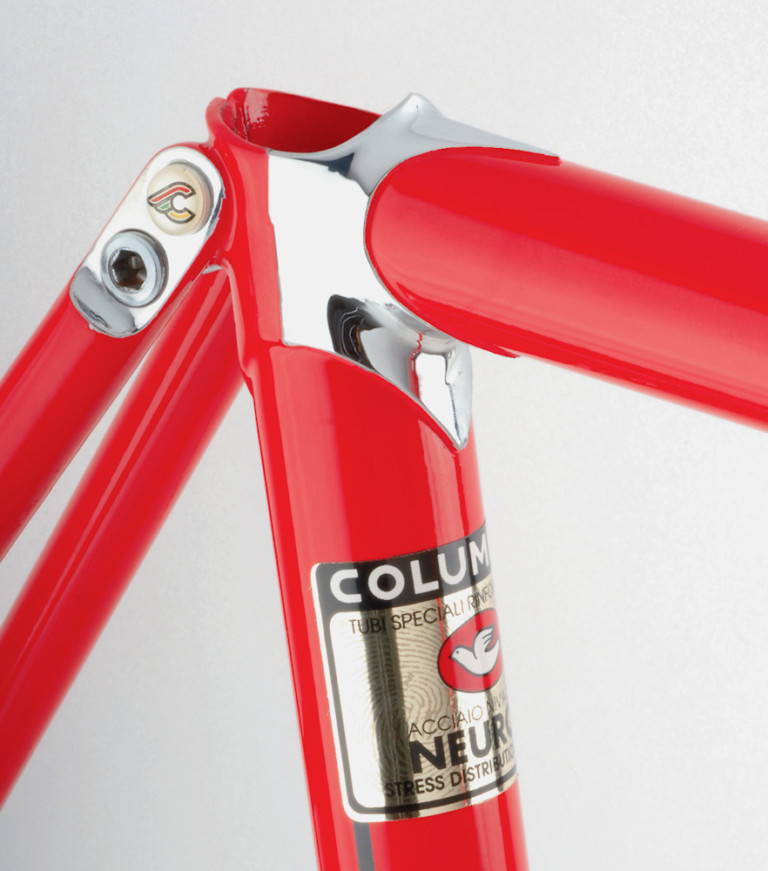
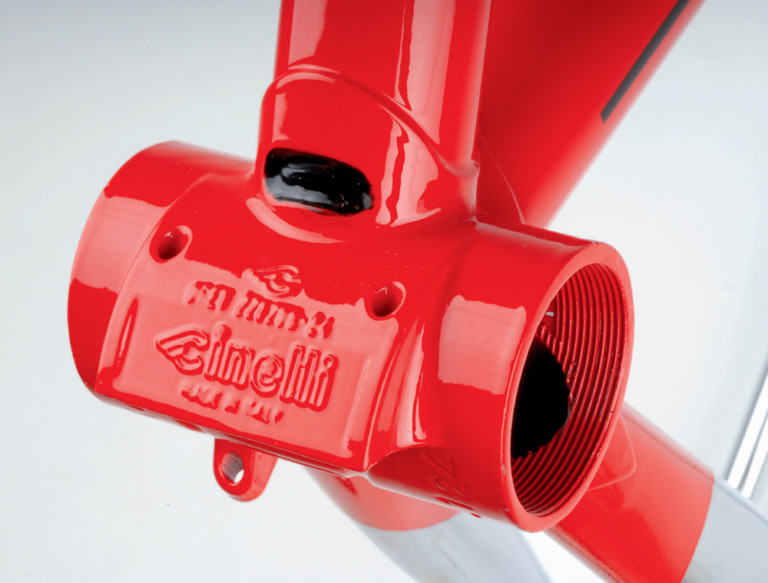
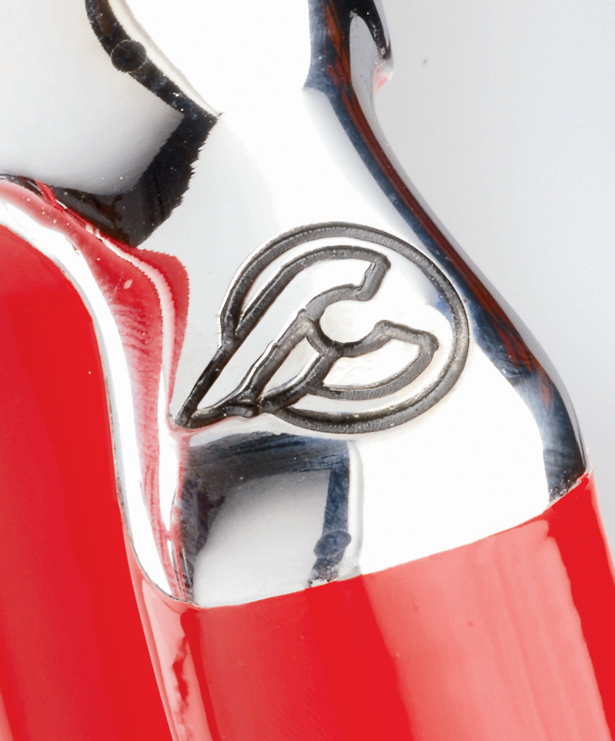
While materials may have changed over the years, Cinelli handlebars remain a trustworthy staple in cyclists’ gear bags. Ram bars now feature aerodynamic and ergonomic designs, integrated 1 1/8″ stems, lightweight monocoque T700 carbon construction, cycling computer bridges and unique paint jobs. The handlebar line has also found its way into the aero, bullhorn, flat, riser, track and urban niches, to name just a few.
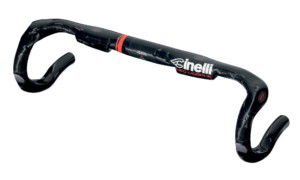
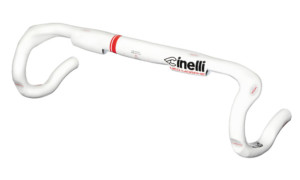
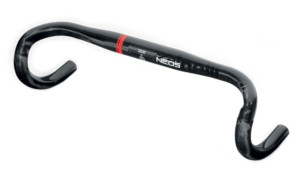
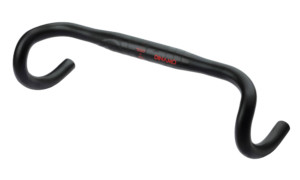
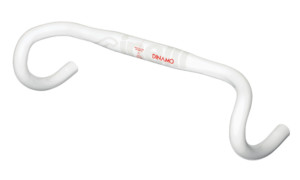
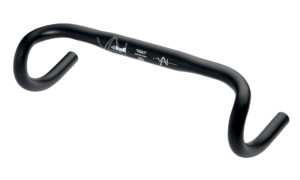
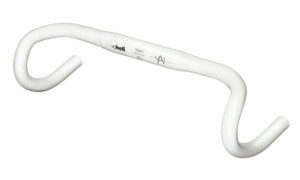
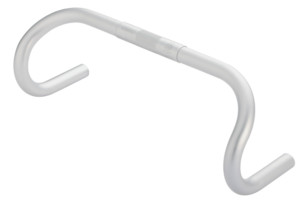
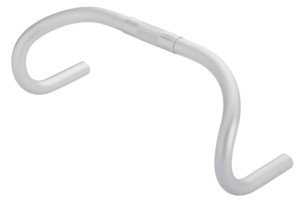
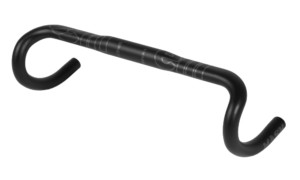
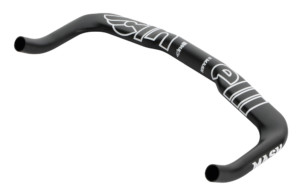
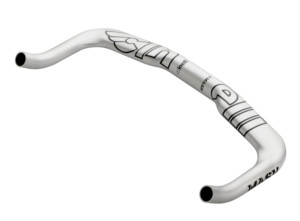
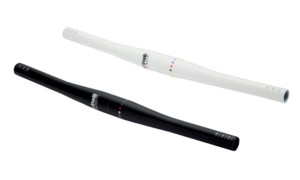
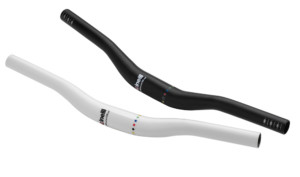
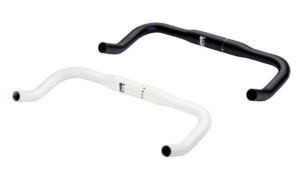
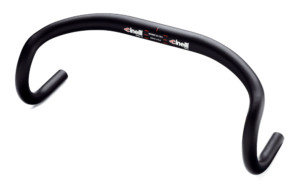
Complementing these models are a full line of stems, seatposts and, yes, bar tapes. Indeed, bar tapes remain a staple of the Cinelli family of products, registering a full thirty different styles of tape at last count. Included here are glow-in-the-dark, vegan and velvet alternatives.
Considering the drive with which Cino Cinelli first founded and subsequently grew his company – and ultimately gained the respect and admiration of the cycling industry at large – it’s no surprise the Cinelli company has lasted so long.
One wonders whether the prevalence of Cinelli bar tapes – and conspicuous absence of Cinelli bicycles and components – in American bike shops diminishes the impact Cinelli has had on the industry, or simply adds to its mystique. Either way, cyclists who’ve been around long enough know Cinelli bikes have always been the quiet warrior, the go-to bike that had class, reliability and technology all wrapped into one pretty package. Luckily for us, the company remains hell-bent on advancing that philosophy today.
Cinelli Ebykr References:
http://www.petry.org/markp/lastoria.htm
http://www.velo-retro.com/cinellitline.html
[…] Legnano framesets were often adorned with beautiful hand-painted finishes. This was for more than just aesthetics, too – it added an extra layer of protection against corrosion and rust. Bozzi and his team of outfitters equipped their best Legnano bikes with high-quality components from revered Italian brands like Campagnolo and Cinelli. […]
[…] of doers, including the chief quaternity of classic lightweight Italian bicycle builders: Cino Cinelli, Ernesto Colnago, Alberto Masi and Ugo De […]
[…] Cinelli has it familiar crest, Colnago its ace of clubs, Fuji its stylized mountain, Raleigh its phoenix and Schwinn its four-point star — but Legnano may be the only bicycle company whose headbadge depicts a sword-lofting warrior. The reason why is nothing short of amazing, predictable as it may be in the end. […]
[…] of doers, including the chief quaternity of classic lightweight Italian bicycle builders: Cino Cinelli, Ernesto Colnago, Alberto Masi and Ugo De […]
What type of freewheel bodies were used for the 1978 and 1979 freewheels? Which technology made the pedal rate of the 2nd highest gear[4th gear] the same as the lowest gear[1st gear] This technology was the best ever produced.
I have just completed a period-correct restoration of my 1970 Cinelli Super Corsa (type A), original silver with chromed lugs, original Campagnolo Nuovo Record Groupo, added Campy side-pull brakes in 1972, full Cinelli stem, handlebar, seat post, and headset. Sized by Spence Wolfe and ordered through the Cupertino bike shop. Delivered seven months later—November, 1970. SN 5153. My only concession to non-original parts is a modern chain and replaced the cracked Campy derailleur pulleys with Bullseye sealed bearing pulleys (manufactured in 1974, Burbank, CA.) Wide-flanged hubs, radial spokes on front wheel. Pleased to discover that I can buy modern tires (Continental Giro “28 inch”, 700×22). Vintage cotton-taped bars with twine finish and four coats of shellac—just like back in the old days. Rides like a dream, inspires dreams, and reminds me of past dreams. Such luxury…
I owned a Cinelli Ottomilano mountain bike from 1988 or 1989 which had columbus tubing and was equiped with shimano xt groupset, it did me well, even suffering a big dent to the top tube due to some klutz knocking a rock off a wall on to it…dartmoor!!! eventually i sold it in 1996 for £75.
You have got to appreciate history… it enriches the spirit to know where things came from…. its interesting how cinelli desined the infamous “death cleates”
I have a Cinelli Super Corsa numbered 6369 on bottom of bottom bracket. A great bike. Anybody know how to determine the manufacture date?
I have had a 1970 speciale corsa, a 1981 super corsa pista, two bootleg racing rats, and now a 2005 unica. I have enjoyed all of them. I think they are very nice bikes. I will buy more Cinelli frames in the future…
I had a Cinelli it was gray in color and was a very fine machine. I won many of races on that bike. I just wish i still had it . Thanks,Bobby
I’m sorry that I must interject to state that a great deal of what is written above is totally incorrect. The least bit of detective work will show the following:
a) By 1943, Cino Cinelli was a spent force in the cycling world. His best years were already behind him at that time.
b) Cino did not found the Cinelli company, it was his older brother, Giotto, who did. Cino joined the company at later date following his retirement as a pro. It was also Giotto who was responsible for initial production of the handlebars and stems. Giotto later left the company to his little brother, when he took over his father-in-law’s plastic stamping business. All of this can be demonstrated by a look at the Italian corporate registry books.
c) Cinelli came very late to the idea of smaller wheels (most definitely not before the 60’s) and did not build them into his company’s bikes. The story about Coppi riding a Cinelli bike is tenuous at best and is not supported by any photographic or print evidence. The idea that Coppi tried a 20 inch wheel Cinelli bike is more likely from the realm of dreams.
d) Cinelli never supplied bikes to any pro team. He was however a mover and shaker in the UVI (Italian cycling federation) and was therefore able to put many an amateur on to his bikes. He also supplied quite a few individual riders.
e) Cinelli had no hand in the initial development of the bivalent hubs. He was the facilitator and the one who helped industrialize the product and marketed them, but he did not develop them.
f) Cinelli did not develop Binda toe straps, but rather was the distributor of them. They were developed by Dino Bianchi.
g) Cinelli did not develop Unicanitor saddles. Nitor was a separate company that was purchased by Cinelli. Nitor made the first plastic saddles which were marketed by Cinelli. They also made a microadjust seatpost.
h) The Laser came out long after Cino had left the company, and Cino had absolutely nothng to do with it.
Even if it might appear that I am downgrading the myth of Cino Cinelli, I believe that it is far more important to remember him for that which he really was. Cino was an incredible man and most defintiely one of the people most responsible in keeping the sport of cycling at the fore. In the early post-war years, he was a master facilitator in making sure that framebuilders and cyclists alike were able to make ends meet. He wheeled and dealed to ensure supply of components and acted as guarantor for many of these builders who otherwise couldn’t get needed supplies. He then founded the pro cyclist association which he then led for over 20 years. The association looked after the best interests of the cyclists and protected them. He also campaigned hard to get support for the Rome olympics in 1960. He was also one of the very earliest people to believe in a true world market for high end bikes. Already in the 50’s he was selling his products throughout the world. He was also the Italian distributor for many a product and in many ways could be considered as one of the godfathers of the business. He was, I believe, by the 70’s, the largest independent supplier of tubesets, lugs, BB shells, fork crowns and all other framebuilding items. A true giant and man of vision!
I own a Cinelli Aero and want to learn more about it. Somebody gave it to me. It is beautiful. Anybody have any info?
Thanks for the history and long live Cinelli! I had the opportunity to buy a beautiful 2004 Unica last season. It had been built up (incorrectly) and never ridden. But now the ride is unbelievable. Aluminum frame with carbon fork but not at all harsh. Smooth and comfortable are the best words to describe it. Plus unlike the myriad of Cannondales and Treks mass marketed and sold all around, this beauty really catched the eye. It is bright yellow with red tires, red pedals, and even a red seat. Stand out in the crowd, I say. I still have some upgrades (don’t we always) but in the meantime I couldn’t be happier.
HI MY NAME IS JAMES R. CHIARA AND WOULD LIKE TO SHARE MY FANTASTIC EXPERIENCES WITH THE CINELLI SUPER CORSA PURCHASED FROM OSCAR WASTYN CYCLES IN CHICAGO IN JUNE 1973. RACED LOCALLY AGAINST ALL AGE BRACKETS AND WON ON MOST OF THE FLAT COARSES. THE BEST BEING THE BLOSSOM RACE AGAINST NATIONAL RANKED MASTERS FROM THE EAST, WHICH HIT AN UNBELIEVABLE TOP SPEED IN THE SPRINT OF 46.9 MPH ON THE CINELLI. THE LAST RACE WAS IN MONCELLO N.Y. IN THE MASTERS WORLD CUP FINISHING 9TH OVERALL AND WINNING THE PACK SPRINT COMPETING AGAINST SUPPOSEDLY MORE ADVANCED BIKES. AFTER THAT HAD IT PAINTED AT CYCLE ART IN CAL. AND PJUT ALL NEW SUPER RECORD PARTS ON IT. NOW HANGS WITH 26 OTHER BIKES IN MY BIKE ROOM. HAVE TWO LETTERS SIGNED BY CINO CINELLI HIMSELF FROM 1977 AND 1979 WHICH ARE TREASURED!
REPECTFULLY,
JIM CHIARA
[…] Added to the Gallery: A Photo Album of Cinelli Parts see also History of Cinelli Filed under Cinelli, Parts, cinelli, bicycle, bike, parts, components, gallery, photo, album, pictures, images by EBykr. […]